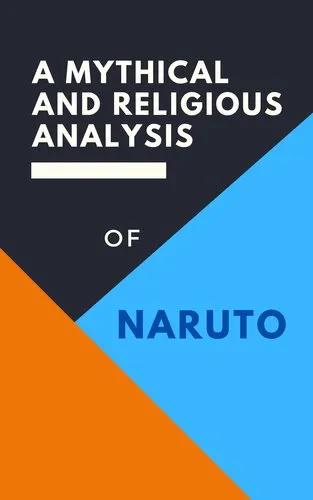Naruto: A Mythical and Religious Analysis
5.0
Reviews from our users

You Can Ask your questions from this book's AI after Login
Each download or ask from book AI costs 2 points. To earn more free points, please visit the Points Guide Page and complete some valuable actions.
A guide to the mythical and religious elements of the Naruto series.
A book that serves as a side-by-side commentary on the first season and Shippuden.
Overview of the information in some major chapters
Chapter 1: Land of Waves
- Inari Mythology
- The Kitsune in Japanese Folklore
- Kakashi vs Zabuza being a modernisation of Miyamoto Musashi and Sasaki Kojiro
Chapter 5: Naruto vs Neji
- The role of Confucian values in shaping the Hyuga clan
- The adaptations of The Journey to the West, in terms of narrative value and characterisation of Naruto
- The role that Taoism plays in providing an answer to Neji
Chapter 7: Sannin Showdown
- Adaptation of The tale of the Gallant Jiriaya for the three Sannin
- How the story also influences the Konoha crush arc
Chapter 8: Sasuke leaves the village
- The possibility of the Egyptian Mythology of Osiris being a significant shaping of Sasuke's character, and the Myths of
Horus shaping Sasuke in early Shippuden.
- The nihilistic differences in Kimimaro and the old Neji
Chapter 14: Brothers between battle
- The story of the Shinto god Susanoo and the story of Yamata-no-Orochi being featured
- Sasuke's personfication of Amaterasu
- How the cave of Amaterasu's entrapment has been modernised in correspondence with the ideas of Plato's cave
Chapter 16: Pain
- The symbolism of Christ developing to fight Pain on his own
- The psychological symbolisms found in Western alchemy, mapping onto Naruto's descent into hell
- Naruto's TnJ with Nagato bearing resemblance to Dostoyevsky's The Brothers Karamazov
Chapter 20: Tests of Character
- Zetsu's correspondence to the alchemical symbolism of the mandrake
- How this carries over into the ideas of the homunculus, with Zetsu and Naruto articulating two different types
Chapter 25: Squad 7 Reunited
- The history of Indra and the Asuras in Hinduism
- The combination of select Yokai and Shugendo rituals which forms the idea of the Ten-Tails
- The history of Shugendo influencing Ninshu, and the division between Hagoromo's children Indra and Ashura
Chapter 26: Endgame
- Kaguya being adapted from The tale of the Bamboo cutter
- The story of the Chinese Goddess of the moon and the elixir corresponding to the divine fruit
- The story of Obito's redemption (also see Chapter 22.)
Free Direct Download
Get Free Access to Download this and other Thousands of Books (Join Now)
For read this book you need PDF Reader Software like Foxit Reader


